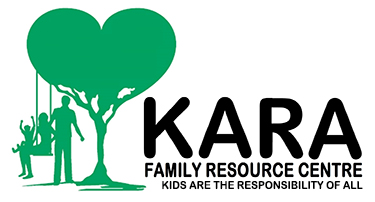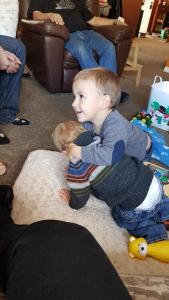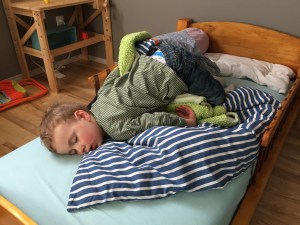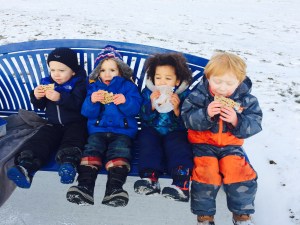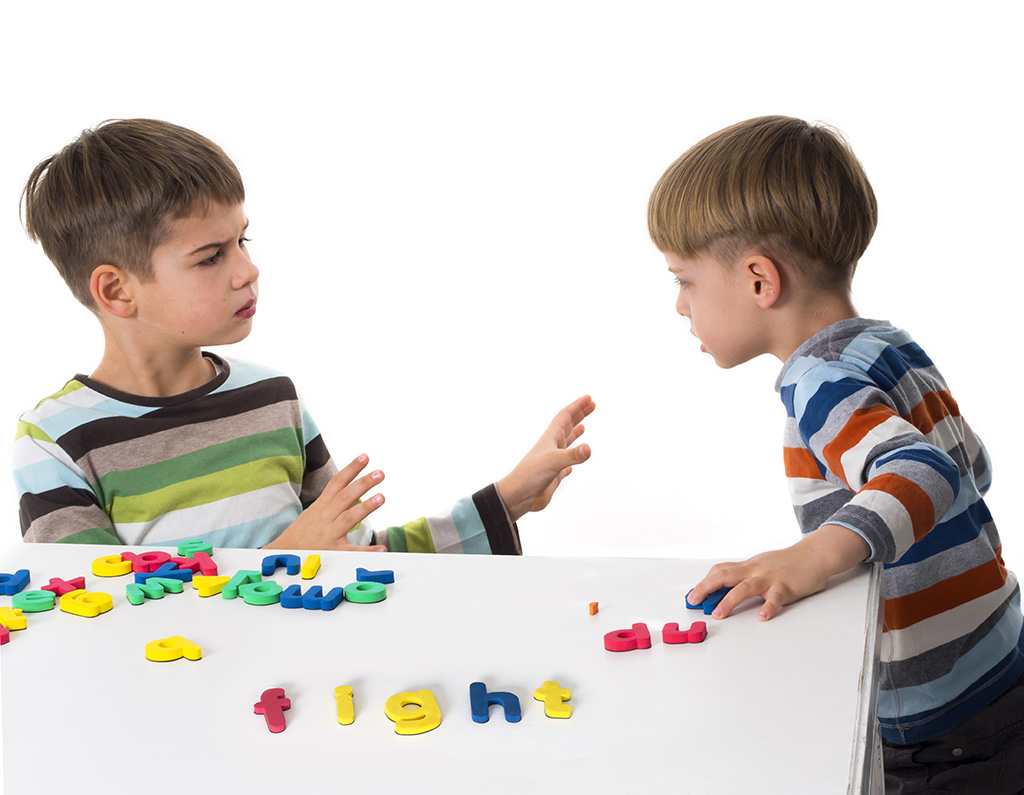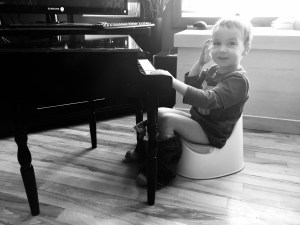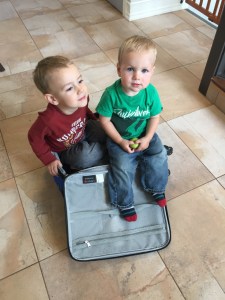
Bed Sharing with Toddlers
Recently, my younger son, Polar Bear, has been finding it difficult to sleep through the night without finding his way to my bed. In the very wee hours of the morning, I can often hear his stumbling footsteps down the corridor between our two rooms. I doze in and out as I listen to his “Mama, mama, dou,” semantics. Roughly translated to English, I think this is “Mommy, where are you?”
Then I’m jolted awake as he throws open my bedroom door and, like a heat seeking missile, launches himself into the folds of covers that are around me.
Usually, I am able to fall back to sleep and endure the unprovoked and startling knee jerks to the back and elbow jabs to the face. Some nights, I just needed my mommy sleep and I gently corral him back to his bed or play musical beds and find another place to lay my head. Other nights, I enjoy the nighttime snuggles and wonder if there are negatives to bed sharing.
The Truths about Bed Sharing
The Canadian Pediatric Society does not recommend bed sharing with children under the age of one as it isn’t safe. Bed sharing with infants can be dangerous due to the increased risk of SIDS and suffocation. Please click here to learn more about these dangers and how to prevent them.
For children over the age of one, there doesn’t appear to be a general consensus on bed sharing among experts. Many see it as benefiting children through bonding. Others saw it as disrupting a child’s social skills and independence. A great deal more seem not to take a stance.
However, a study conducted in 2011 helped debunk the 21st century thoughts that bed sharing may decrease a child’s developmental progress. When factoring in the socio-economic factors of the 944 families observed with children aged 1 to 5, there were no obvious developmental or behavioural issues noted between the children who shared a bed with their parents and didn’t. An anthropologist who looked at the study also mentioned that children may have instinctive sleep needs that don’t match our modern-day parenting sleep expectations (click here).
As a parent of young children, I can understand their little person instinct to want to be close to someone who provides comfort and security when woken in the middle of the night. My children use me as a shield for most unpleasant experiences they face; meeting strange dogs at the park, making new friends at their dayhome, trying new sporting activities, and even tasting new green, leafy vegetables. So why shouldn’t they want my comfort and experience when faced with darkness? Surely, it’s only natural, no question, but I, like many, have a modern day life with a modern day career, so I do need my children to be modern day sleepers, at least on weekdays.
Sleep Retraining
Now Polar Bear used to be a model sleeper, just like his brother, sleeping soundly all night and going back to sleep easily if woken. One night, something woke him and, foolishly, I brought him to my bed to comfort him. Since then, he came looking for me about once or twice a month in the middle of the night. It normally did not affect me too much because it wasn’t too often and I was able to get the sleep I required to function the following day. More recently, however, it became once or twice a week, which greatly affected my daily performance at everyday tasks.
I had to get Polar Bear to be comfortable sleeping in his own bedroom for my sanity. And since he was already a model sleeper, retraining him wouldn’t be too hard (or so I thought)!
Sleep retraining Polar Bear wasn’t easy. True, I was starting with a ready-made pro that I had just made a small lapse in nighttime guidance, but he was a stubborn little man and had already gotten to a place of expected nightly snuggles; it had already sunk in that Mommy would comfort him until he fell asleep (if she was too tired to put up a fight). Funny how fast their learned behaviour develops, isn’t it? But, I knew how to retrain him, just like the first time, when he was a small baby. And just like the first time, I knew it wasn’t going to be pretty.
Sleep Training a Toddler
It turns out sleep training a toddler isn’t quite as easy as sleep training a baby. It turns out they can stay awake for much longer periods of time than a baby. They also make a heck of a lot more noise. Polar Bear easily woke his brother on multiple occasions and I would have to endure both boys pining for me in the middle of the night. But I persisted, taking these crucial pieces of advice (click here) along the way: pick a good time to start, be persistent, and give plenty of praise!
Pick a good night to start – First, I made sure it was a good night to begin this process. For my situation, this meant a weekend so that we could both sleep in if Mommy-Toddler arguments went well into the night. I also waited until he no longer had a cold and could sleep soundly once asleep. Was he in the midst of changing routines or potty training? Nope, another green light that it was the right time to start.
Stick to the routine – My children and I follow a simple bedtime routine before lights out. This routine consists of brushing our teeth and reading 5 board books (the last one is a goodnight themed one). If your family has a nightly routine, stick to it. When children are able to predict what will happen next, they feel secure and safe (click here). This is especially important to a child learning to comfort themselves during the night.
Lights out and listen – Now this is the tough part, especially if you didn’t handle the baby “cry-it-out” stage well. If your child is like mine, they can dish out explosive fury. I would sit outside his door and wait for him to open it, each time walking him back to his bed and giving him a stern look after explaining that he needed to stay in his bed. In his day, my older son handled this tactic moderately well, only pining for another book or glass of water. Polar Bear just pierces me with dirty looks (we call it the Polar Bear Glare) and clenched fists before letting out angry growls as I closed the bedroom door. Every child is different and they will probably try multiple tactics to make you give in, but it’s important to stay strong!
Nightly gambles – Polar Bear would try his luck at climbing into my bed in the early morning hours. This was the toughest part of our relationship. Mostly because this was the time when I was least motivated to win and because he had already won so many times in the past. But I was resilient and marched him back, hand in hand, to his bed every time he tried.
The victorious morning after – This was the best part of our battles, the morning party held just for him! I would deliver plenty of praise (and gratitude) that he spent the whole night in his bed. His favourite part, other than having the pleasure of picking his own morning juice box, was being called a “big boy just like his brother.”
This did make my older son mimic those Polar Bear Glares!
From One Parent to Another
If you struggle with nightly visits from your child, fear not! You can try some of the tactics here knowing that whatever you try, consistency and persistence always wins! On the other hand, bed sharing does not have negative impacts to your child (just to your sanity), so if you cherish the moments that seem to fly by so quickly, keep snuggling them!
